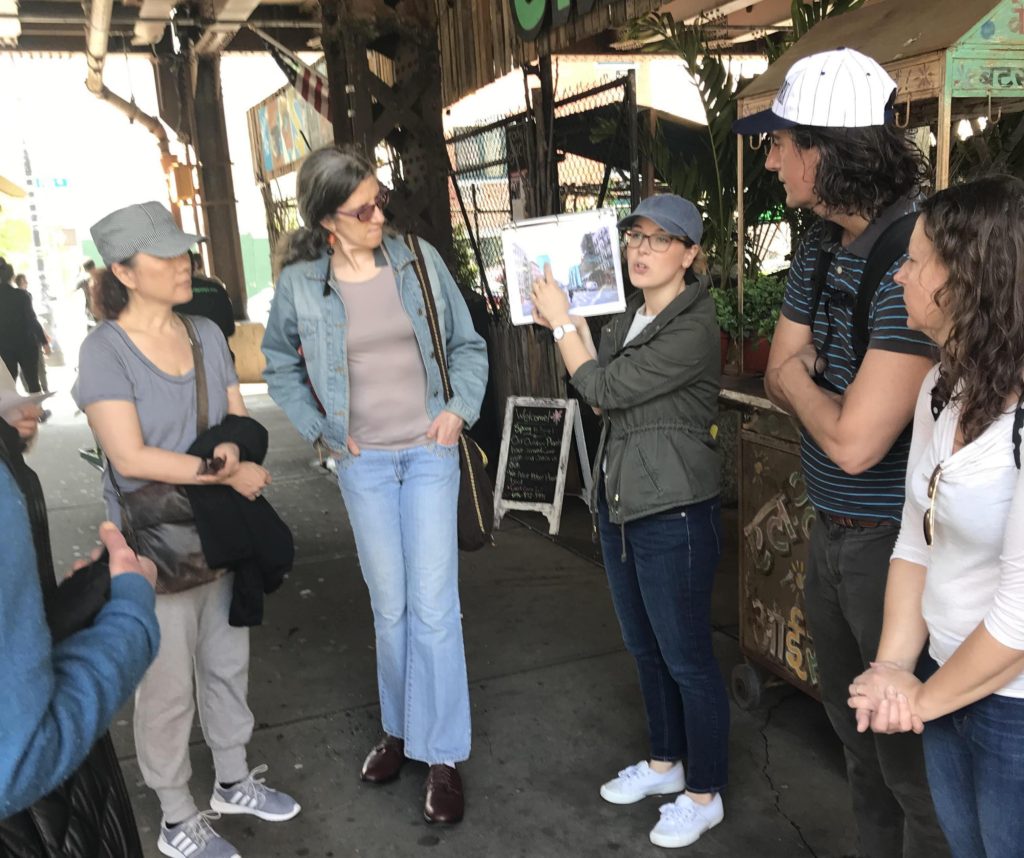
A Conversation with Urban Planner Olive Jovine About Technology and Computer Vision Uses in Urban Planning
We chatted with Olivia Jovine, an Urban Planner at Localize in New York City and founder and co-chair of the Technology Committee at the New York Metro Chapter of the American Planning Association (APA). The APA New York Metro Chapter and Numina are co-hosting an event on March 9th: Empowering Cities with Data: Partnership Building & Frontier Technologies.
JD: As an urban planner living and working in New York City, what are your favorite public spaces in the city? What stands out to you that others might not notice?
OJ: It’s hard to pick just one favorite public space, but at the top of my list would have to be Grand Central Terminal. It combines many key elements into one incredible public amenity for New Yorkers and visitors alike: historic architecture, commerce, multi-modal transportation, and the breathtaking ceiling which is an excellent example of how important public art can be for placemaking. As a planner, I think GCT is so special because not only is it so beautiful and a historic time piece, it is also a totally functioning terminal that sees around 750,000 people each day!
JD: New York neighborhood culture is such a popular conversation topic, and I often find myself comparing apartments with friends who live in Manhattan and Queens! Localize brings an interesting new dataset to this discussion. How would you describe the kinds of problems your team is trying to solve or understand more deeply?
OJ: As an urban planning analyst at Localize, I am dedicated to finding the relevant information any homeowner or renter would want to know about a property on the market. I use open data and primary research to uncover relevant details at the neighborhood level; and our data science team uses algorithms to uncover details at the property level, such as building violations. The main problem we’re trying to solve is how to give the user more information to leverage in their home-finding search. The interesting thing is that most of this information is available via public datasets, it’s just hard for the common user to parse it out, so that’s where Localize comes in.
JD: In your opinion, what are effective ways to use technology in urban planning?
OJ: In the face of climate change, using technology in urban planning can bringing our cities away from a car-centric approach to planning, and breaking away from carbon dependency is so important. Frontier technologies including pedestrian counting and data visualization can help us disrupt the standard models we have for car ownership, transportation planning, road design, and many other features of our built environment.
JD: What do you find most exciting and most concerning about computer vision and data insights in the public realm?
OJ: Computer vision is an area of machine learning that I have only recently started to understand, and it’s been eye-opening to learn about the real-world applications of this technology. For the public realm, it feels like we’re in a renaissance period, where the possibilities to apply this frontier technology are endless, whether that’s surveying construction sites, monitoring street activity, or ,of course, self-driving vehicles. In my mind, computer vision should be embraced in urban planning as long as the technology puts people first and is respectful of citizen privacy.
JD: Given your work on disaster preparedness in NYC, any tips you’d like to share with readers for this age of climate change?
OJ: Yes, I’m a total nerd when it comes to storm water and sewer overflow in the city. Often, when we think of climate change, we think about hurricanes or extreme weather events. But in reality, New Yorkers are experiencing more incremental effects of the shifting climate as the city’s weather has been trending wetter in recent years: Five of the top ten wettest years have been since 2000. Thunderstorms and heavy rainfall can have a crippling effect on transit and streets especially since the strains to the system are experienced annually, and with rising sea levels, storm impacts will be exacerbated over the long term. Heavy rainfall often causes sewers to back up into people’s homes, or flow into the city’s rivers and bays, as polluted stormwater or untreated sewage gushes directly into the waterways before reaching sewage treatment facilities. In my work at Localize, we actually have been tracking 311 complaints as they relate to street flooding, the highest number of street flooding complaints made in a single day was in 2017— it corresponded with that torrential downpour we saw that spring.
JD: Any upcoming APA Tech Committee event you’d like to share?
OJ: Really looking forward to moderating a discussion with Numina’s very own Tara Pham, and Regina Myer, President of the Downtown Brooklyn Partnership, at our ‘Empowering Cities with Data’ event!
On March 9, 2020, the American Planning Association—NY Metro Chapter will host the event ‘Empowering Cities with Data: Partnership Building & Frontier Technologies.’ The event will feature presentations and workshops with Numina’s team and Regina Myer, President of the Downtown Brooklyn Partnership.